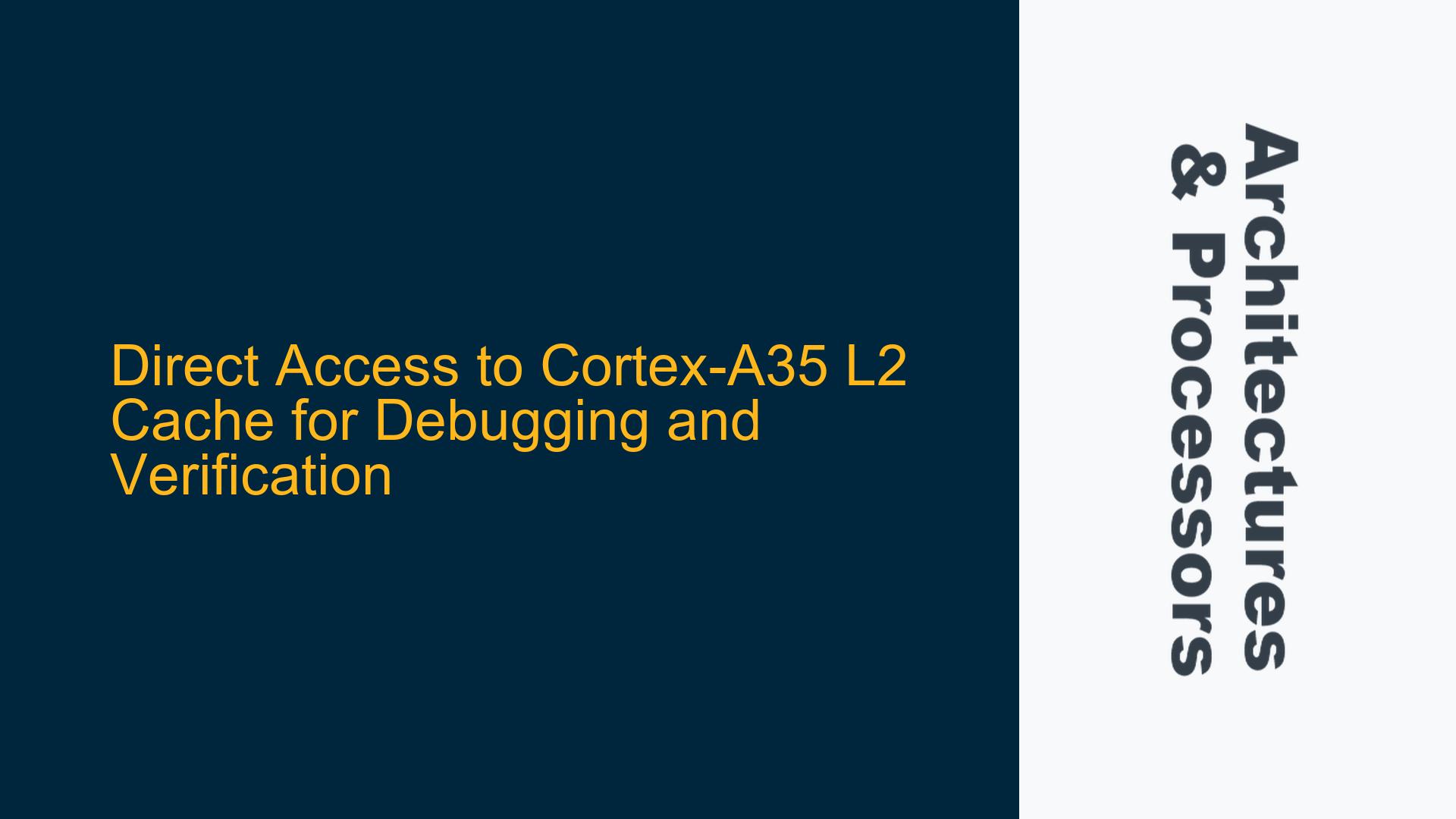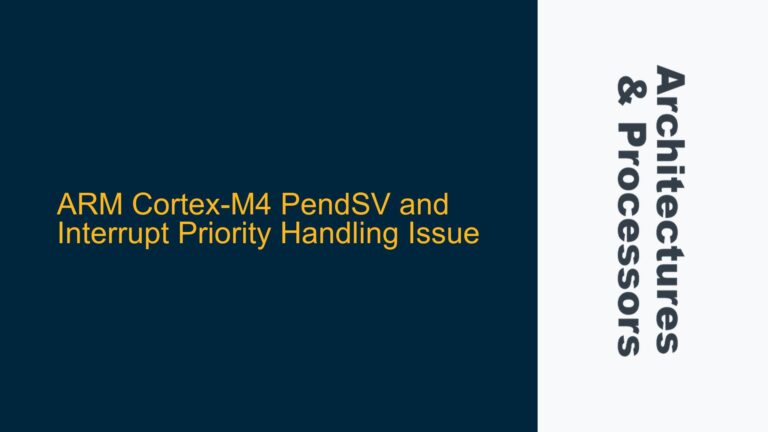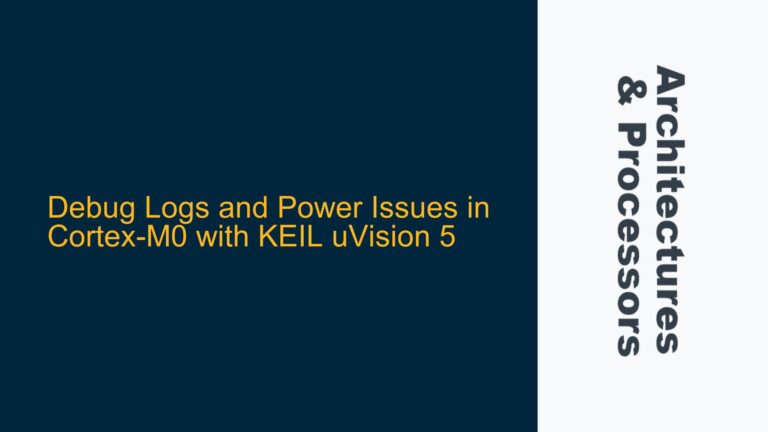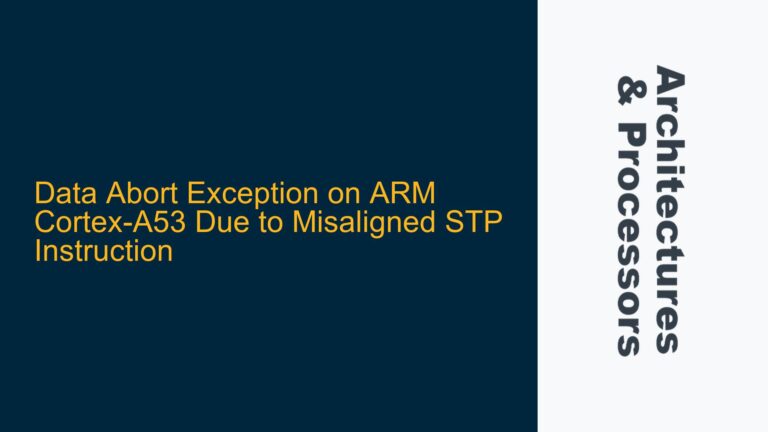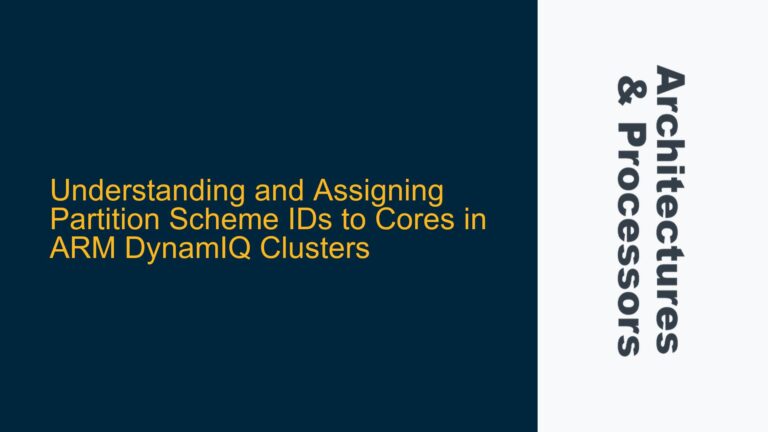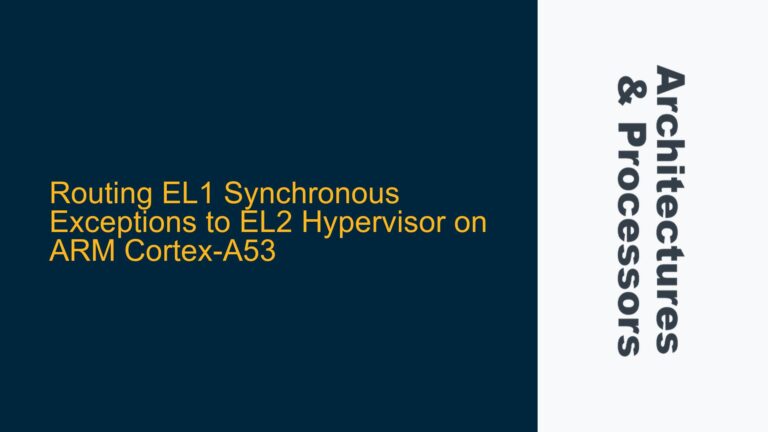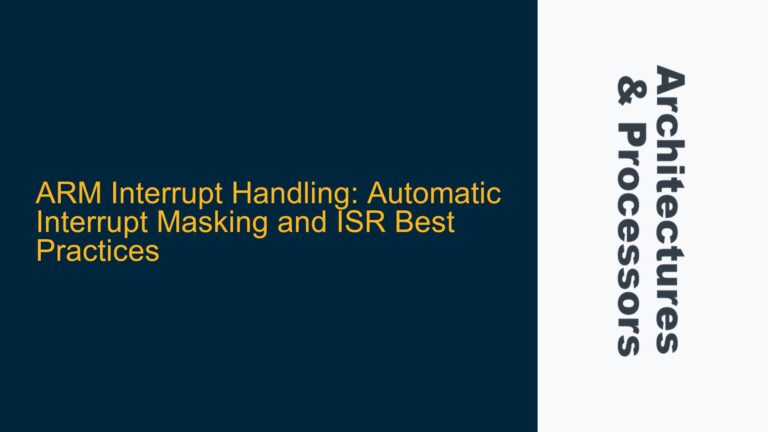Cortex-A35 L2 Cache Access Limitations and Debugging Constraints
The Cortex-A35 processor, a highly efficient ARMv8-A core, is designed for low-power applications while maintaining high performance. One of its key architectural features is the inclusion of a shared L2 cache, which is critical for reducing memory latency and improving overall system performance. However, accessing the contents of the L2 cache directly for debugging or verification purposes presents significant challenges. Unlike the L1 cache, which can be accessed directly for debugging, the L2 cache does not provide the same level of visibility. This limitation is rooted in the Cortex-A35’s architectural design, which prioritizes performance and power efficiency over direct cache access for debugging.
The Cortex-A35’s L2 cache is shared among the cores in a cluster, and its management is tightly integrated with the memory system. The cache operates transparently to the software, meaning that the processor handles cache fills, evictions, and coherency automatically. While this design is optimal for performance, it complicates direct access to the cache contents. Debuggers like Trace32, which are commonly used for ARM processors, are unable to provide direct access to the L2 cache due to these architectural constraints. This limitation is particularly problematic for developers who need to verify that the L2 cache is being utilized effectively or who are debugging complex memory-related issues.
The inability to access the L2 cache directly does not mean that developers are entirely without options. There are indirect methods to infer the state of the L2 cache and ensure that it is being filled as expected. These methods rely on a combination of performance counters, cache maintenance operations, and careful analysis of memory access patterns. While these techniques do not provide the same level of visibility as direct cache access, they can be used to achieve similar goals in most scenarios.
Architectural Design and Debugging Constraints of Cortex-A35 L2 Cache
The Cortex-A35’s L2 cache is designed to be a high-performance, low-latency memory buffer that reduces the need to access slower main memory. It is typically sized between 128 KB and 1 MB, depending on the specific implementation, and is shared among the cores in a cluster. The cache is organized into sets and ways, with each cache line typically being 64 bytes in size. The cache uses a write-back policy, meaning that data is written to main memory only when a cache line is evicted.
One of the key reasons why direct access to the L2 cache is not supported is the complexity of maintaining cache coherency. The Cortex-A35 implements a snoop control unit (SCU) to manage cache coherency between the L1 and L2 caches, as well as with other cores in the system. Allowing direct access to the L2 cache would introduce significant complexity in maintaining coherency, as any changes to the cache contents would need to be propagated to other caches and memory. This would not only increase the complexity of the hardware but also introduce potential performance bottlenecks.
Another factor is the Cortex-A35’s focus on power efficiency. Direct access to the L2 cache would require additional circuitry to support debugging interfaces, which would increase power consumption. Given that the Cortex-A35 is targeted at low-power applications, this trade-off is not justified. Instead, ARM provides other mechanisms, such as performance monitoring units (PMUs) and cache maintenance operations, to help developers analyze and optimize cache usage.
The lack of direct access to the L2 cache is not unique to the Cortex-A35. Many modern processors, including other ARM cores, have similar limitations. This is because the primary purpose of the cache is to improve performance, not to provide visibility into its contents. Debugging and verification tools are typically designed to work within these constraints, providing alternative methods for analyzing cache behavior.
Indirect Methods for Analyzing Cortex-A35 L2 Cache Behavior
While direct access to the Cortex-A35 L2 cache is not possible, developers can use several indirect methods to analyze and verify cache behavior. These methods rely on a combination of hardware features, software techniques, and careful analysis of system behavior. By leveraging these techniques, developers can gain valuable insights into how the L2 cache is being used and identify potential performance bottlenecks.
One of the most powerful tools for analyzing cache behavior is the Performance Monitoring Unit (PMU). The PMU provides a set of counters that can be used to track various cache-related events, such as cache hits, cache misses, and evictions. By configuring the PMU to monitor these events, developers can gain insights into how the L2 cache is being utilized. For example, a high number of cache misses may indicate that the cache is not being filled effectively, while a high number of evictions may suggest that the cache is too small for the workload.
Another useful technique is the use of cache maintenance operations. The ARM architecture provides a set of instructions that can be used to manage the cache, such as invalidating cache lines, cleaning cache lines, and flushing the cache. These operations can be used to ensure that the cache is in a known state before and after critical sections of code. For example, developers can use cache invalidation operations to ensure that the cache is empty before running a benchmark, allowing them to measure the impact of cache fills on performance.
Developers can also analyze memory access patterns to infer the state of the L2 cache. By carefully designing test cases and monitoring memory access times, developers can determine whether data is being served from the L2 cache or from main memory. For example, if a particular memory access takes significantly longer than expected, it may indicate that the data was not present in the L2 cache and had to be fetched from main memory. This type of analysis can be combined with PMU data to build a comprehensive picture of cache behavior.
In addition to these techniques, developers can use simulation and modeling tools to analyze cache behavior. These tools allow developers to simulate the behavior of the Cortex-A35 and its L2 cache under different workloads and configurations. While simulation is not a substitute for real-world testing, it can provide valuable insights into how the cache is likely to behave in different scenarios. This can be particularly useful during the early stages of development, when hardware may not yet be available for testing.
Implementing Cache Analysis and Optimization Strategies for Cortex-A35
To effectively analyze and optimize the Cortex-A35 L2 cache, developers should follow a structured approach that combines the techniques described above. This approach should begin with a thorough understanding of the workload and its memory access patterns. By identifying the key data structures and algorithms that are most critical to performance, developers can focus their efforts on optimizing cache usage for these areas.
The first step in this process is to configure the PMU to monitor cache-related events. This involves selecting the appropriate counters and setting up the PMU to capture data during the execution of the workload. Once the PMU is configured, developers can run the workload and collect data on cache hits, misses, and evictions. This data can then be analyzed to identify potential bottlenecks and areas for improvement.
Next, developers should use cache maintenance operations to ensure that the cache is in a known state before and after critical sections of code. This can help to eliminate variability in cache behavior and ensure that performance measurements are accurate. For example, developers can use cache invalidation operations to clear the cache before running a benchmark, ensuring that all data is fetched from main memory. Similarly, cache cleaning operations can be used to ensure that data is written back to main memory before the cache is flushed.
Once the cache behavior has been analyzed, developers can begin to optimize the workload to make better use of the L2 cache. This may involve reorganizing data structures to improve cache locality, or modifying algorithms to reduce the number of cache misses. For example, developers can use techniques such as loop unrolling, data alignment, and prefetching to improve cache performance. These optimizations should be carefully tested and validated using the PMU and other analysis tools to ensure that they have the desired effect.
Finally, developers should consider using simulation and modeling tools to explore different cache configurations and workloads. These tools can provide valuable insights into how the cache is likely to behave under different conditions, and can help to identify potential issues before they arise in real-world testing. By combining simulation with real-world testing, developers can build a comprehensive understanding of cache behavior and optimize their applications for maximum performance.
In conclusion, while direct access to the Cortex-A35 L2 cache is not possible, developers can use a combination of performance monitoring, cache maintenance operations, and careful analysis of memory access patterns to analyze and optimize cache behavior. By following a structured approach and leveraging the tools and techniques available, developers can ensure that their applications make the most effective use of the L2 cache and achieve optimal performance on the Cortex-A35 processor.
